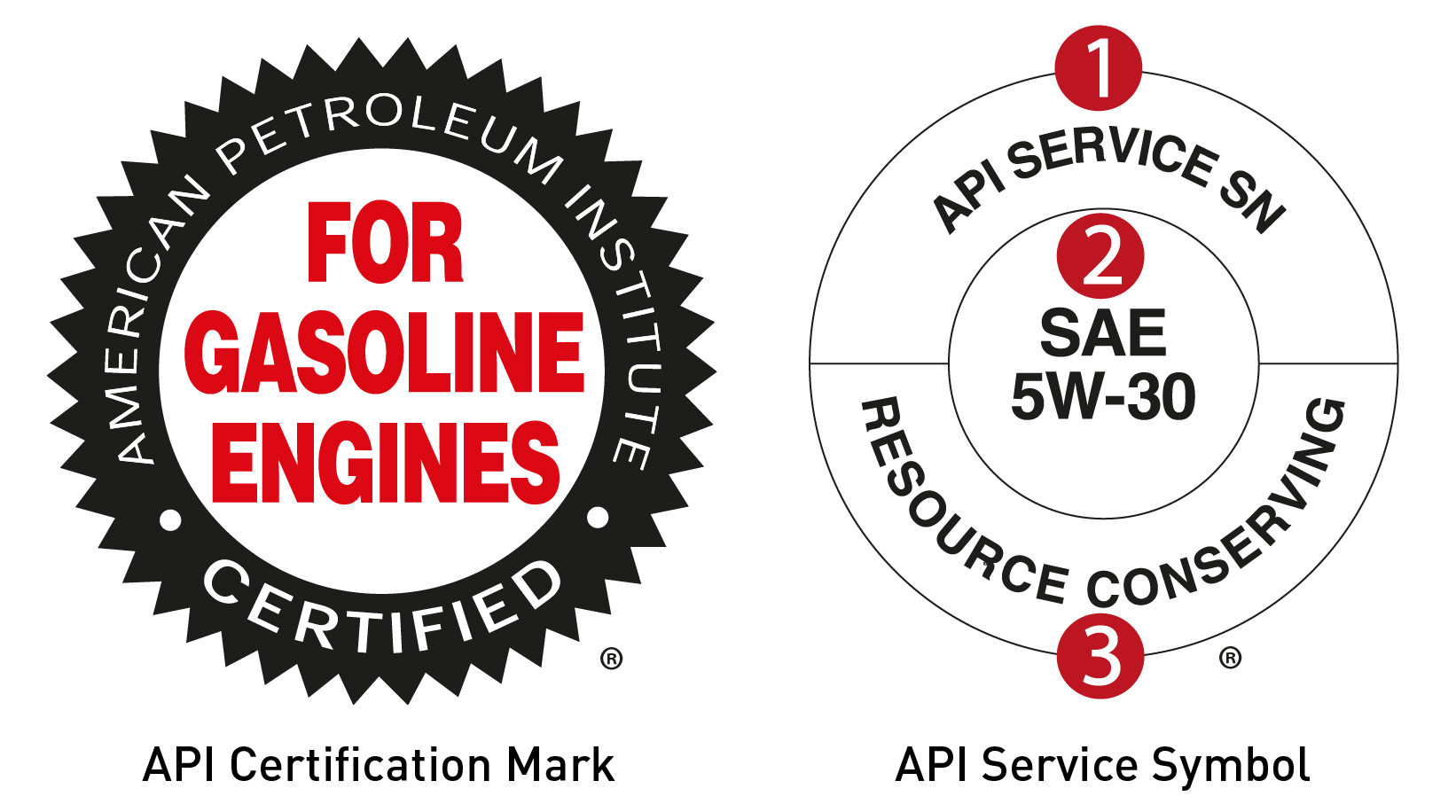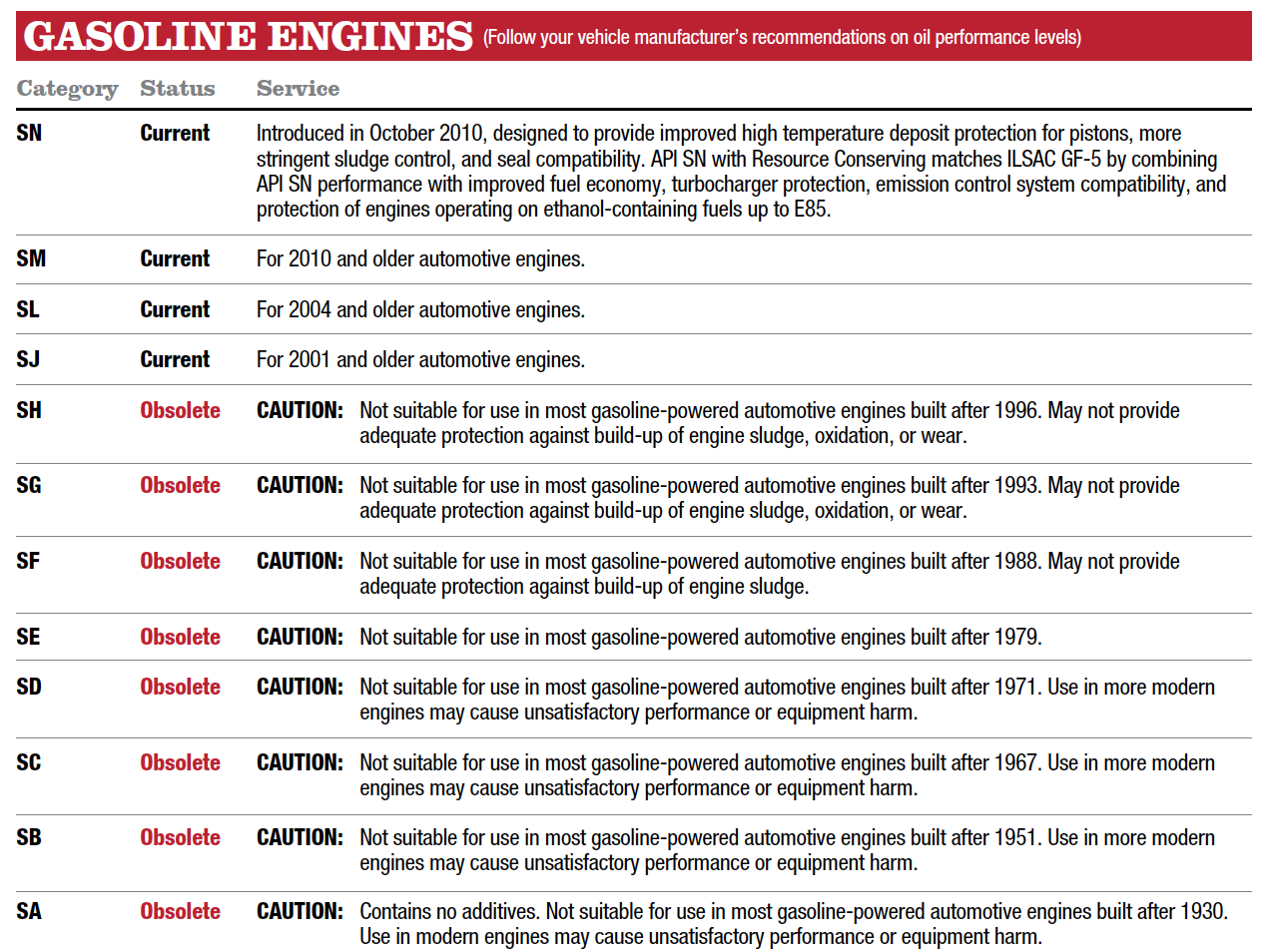Passenger Car Motor Oil Part 3 – API Oil Standards
09.10.2017
The American Petroleum Institute (API) was established on 20 March, 1919 and is the largest U.S. trade association that represents about 650 corporations that are involved in production, refinement, distribution and many other aspects of the petroleum industry.
For more than 85 years, API led the development of petroleum and petrochemical equipment and operating standards. API also defines standards for the energy conservation of motor oil and developed Engine Oil Licensing & Certification System (EOLCS) program, that authorizes engine marketers, that meet specified requirements to use the API Engine Quality Marks.
API’s Certification Mark and Service Symbol
The API certification mark and service symbol identify quality motor oil for gasoline-powered vehicles. Oils that display these marks meet the performance requirements set by the U.S. and international vehicle and engine manufacturers and the lubricant industry.
An oil that displays the API Certification Mark, also known as the “Starburst”, meets the current engine protection standard and fuel economy requirements of the International Lubricant Standardization and Approval Committee (ILSAC), which is a joint effort of U.S. and Japanese automobile makers. Automobile manufacturers recommend oils that carry the API Certification Mark (refer to the ILSAC STANDARD FOR PASSENGER CAR ENGINE OILS chart for more descriptions of current ILSAN standards).
 Source: American Petroleum Institute at www.api.org
Source: American Petroleum Institute at www.api.org The API Service Symbol, also known as the “Donut”, is explained as follow:
1) Performance Level
Motor oils designed for cars, vans, and light trucks with gasoline engines fall under API’s “S” (Service) categories. Please see the Gasoline Engines chart below for descriptions of current and obsolete API service categories.
2) Viscosity Grade
The measure of an oil’s ability to flow at certain temperatures. Vehicle requirements may vary. Follow your vehicle manufacturer’s recommendations on SAE oil viscosity.
3) Resource Conserving
“Resource Conserving” applies to oils intended for gasoline-engine cars, vans, and light trucks. Widespread use of “Resource Conserving” oils may result in an overall savings of fuel in the vehicle fleet as a whole.
The current and previous standards and categories are listed below. Vehicle owners should always refer to their owner’s manuals before consulting these charts. Oils may have more than once performance level.

 Source: American Petroleum Institute at www.api.org
Source: American Petroleum Institute at www.api.org For automotive gasoline engines, the latest ILSAC standard or API Service Category includes the performance properties of each earlier category and can be used to service older engines where earlier category oils were recommended.
We hope you find this information guide (together with the last two instalments of the guide to Passenger Car Motor Oil), helps you better understand the type and grade of oil so that you’re able to choose the right oil for your vehicle.
If you need more information on Totachi lubrication products, please feel free to contact Totachi’s distributor in your country or info@totachi.com for assistance.
